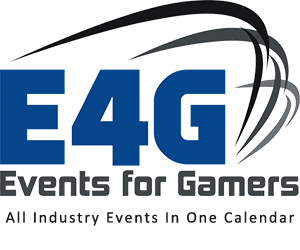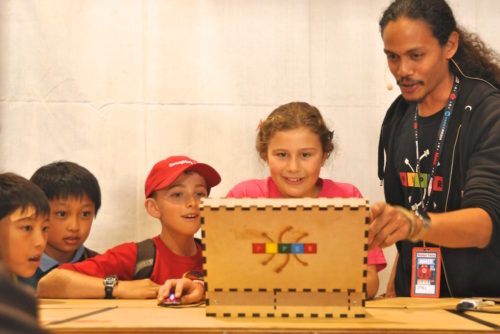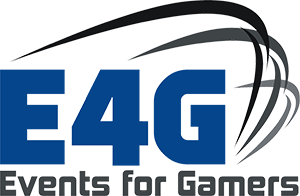STEM — an acronym for Science, Technology, Engineering, and Mathematics — is a term that gets more visibility in popular media, due to a call to arms in improving interest in this spectrum of education because of the shift in the workplace toward digital careers. What tools and concepts can be applied to increase interest in STEM? A recent Forbes story highlights one possible answer through the juxtaposition between STEM education and a do-it-yourself maker community, at least in the United States:
Today, more than 46% of Americans (135 million people) identify as being part of the maker community, both young and old.
This number is significant, given that only 16% of American high school seniors are proficient in math and interested in a STEM career. While that number is on the rise thanks to federal and state efforts to push for more STEM education, schools can learn a lot from the maker community, which has successfully used active learning (learning-by-doing) to attract students who have become disengaged by formal educational settings.
That brings us to Piper, one of the better-known companies invested in teaching STEM concepts to a range of audiences, especially in group environments such as classrooms. Taken a step further, Piper kits and others like it could also be a neat fit for events like hackathons as well.
Through an interview with Dr. Joel Sadler, CTO and Founder of Piper, we get insight into the company and its platform, their audience and how their hardware might fit into different events.
Events for Gamers: Joel, to start with can you briefly share Piper’s journey with Events for Gamers’ readers?
Dr. Joel Sadler: Early childhood experiences of creating whimsical contraptions with electronic LEGO blocks turned into a lifelong learning path of engineering at MIT and Stanford, leading me to build three technology startups along the way.
Piper was founded in 2014 with the mission to empower future generations of engineers through technology-driven play that combines physical, electrical and software building with games kids love like Minecraft: Pi Edition. Since its inception, Piper has inspired thousands of kids to build their first computer and to see computers not just as a magical black-box, but as an available tool for creative self-expression and problem-solving.

By raising $2.1 million in seed funding, we were able to kickstart Piper’s vision to spark every child’s inner inventor. Piper’s first product, a DIY computer kit, inspired creative confidence and empowerment by seamlessly transforming kids’ passive technology consumption to active learning through our game-based platform. Last year we announced our Series A funding which enabled Piper to build and expand its ecosystem of products which allow children of all ages to develop their STEM skills continually.
E4G: In terms of individual customer and institutional adoption, what’s the current reach for Piper?
Joel: To date over 100,000 kids have built their own Piper Computer. In schools, we are currently piloting the Piper as a next generation learning experience in over 600 schools across the U.S.A.
E4G: Are you seeing interest in or market success outside North America for Piper?
Joel: Absolutely. We have had orders for Piper computer kits in over 80 countries, and we think our approach is universally relevant to a more significant global need to revolutionize technology education for kids. The process of physical building is a universal language regardless of country, spoken-language or socioeconomic background. Lego blocks look the same irrespective of where you come from, and Piper is the new generation of universal digital/physical lego blocks.
E4G: There’s been some discussion online about whether Piper is fully open source, from software to blueprints. What is the open source status for Piper?
Joel: Right now it’s a mixture of open and closed source tools, and we are working on making as much available as possible. The Minecraft: Pi Edition is a core part of our user experience and is this a Creative Commons version of Minecraft designed explicitly for the Raspberry Pi. It is open for the community to add user-generated user-generated scripts for custom game logic. We used this flexibility to build in our own stories and adventures on the Raspberry Pi in order- to teach about computers electronics and programming. We welcome the community to make their modifications, and we’d love to hear about them, too. Right now it’s a mixture of open and closed source tools, and we are working on making as much available as possible.
E4G: While you have Minecraft as part of the Piper system, are you working with other game developers to expand the games, sandboxes or interactive experiences on the platform that the target audience can use to learn from?
Joel: We love working with sandbox systems like Minecraft: Pi Edition and we are constantly working with game designers and programmers to add new episodes and stories to the kit. The Piper Kits connect to WiFi so are updated over the air with new content as we build it. Also since the Piper is based on the Raspberry Pi Linux-based operating system – the sky is the limit on what software you can add on there. For example, we recently added a custom version of Google Blockly to the Piper Kit called PiperCode so kids can program physical circuits with a drag and drop interface.
E4G: What’s the most interesting project a user has created with the Piper Computer Kit?
Joel: I loved seeing one kid who wanted to redesign the Piper – using free 3D CAD modeling software, and a 3D printer at his school, to improve the enclosure of the Piper by adding in an articulating handle so he could carry it around like a lunch box. I also especially like seeing kids building other smart devices they commonly interact with. For example, we saw kids making their own Amazon Alexa systems by adding in a USB microphone and using some openly available virtual assistant software – all running on a Piper box.
E4G: There’s growing competition in the STEM-focused teaching computer kit marketplace. How does Piper differentiate itself from the other players in the space?
Joel: We really focus on exposing building, electronics, and programming together, rather than as separate things. We have found that kids are more engaged when we fuse a variety of approaches together at the same time – and always having a real hand-on building component. For example, using games like Minecraft:Pi Edition to simultaneously give instruction about how to electrically wire up a circuit has been a successful technique for us in keeping kids engaged. Our building experience is as close as possible to real things engineers do every day. It’s a challenging but rewarding building experience with real nuts, bolts, and hinges fused with off the shelf electronics like breadboards and LEDs. We don’t sugar coat any of the parts because we want kids to see the real way things work in their rawest form – while still keeping things fun with a game-based layer. The skills kids pick up after building a Piper kit feed directly into building real things and that is something we wish we would see more companies doing.



